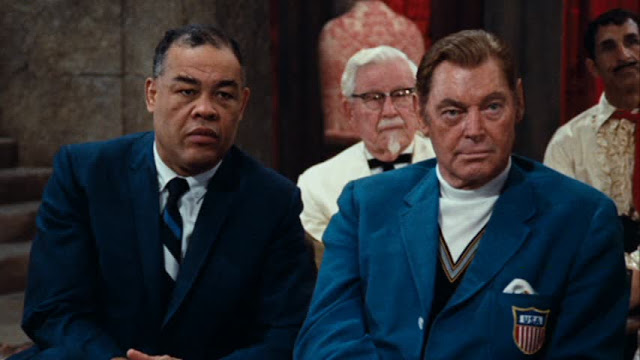Professional heavyweight boxer Joe Louis is one of the most famous sports figures native to Alabama, and one of the first African-Americans to become a national hero. Louis was born near Lafayette in Chambers County on May 13, 1914. In 1926 his family moved to Detroit where his stepfather found work in the auto industry. Louis discovered boxing in a local gym and by 1934 had a 50-4 amateur record. On July 4 of that year he entered his first professional fight, which lasted less than two minutes. Within two years Louis won 27 fights, many against well-known opponents. He lost his first professional bout in June 1936 against Nazi Germany's Max Schmeling. In the June 1938 rematch Louis knocked out Schmeling in the first round, and instantly became a hero in both white and black America.
The Encyclopedia of Alabama article linked above, by Jim Lewis, describes Louis' military service during the Second World War:
"Louis's boxing career was interrupted in 1942 when he enlisted in the Army after the United States had officially entered World War II the previous year. During his military service, Louis participated in 96 boxing exhibitions to raise money for Armed Services relief funds as well as to boost morale. Louis's high profile also advanced the cause of desegregating the armed forces. Louis was able to use his status to help future baseball great Jackie Robinson and several other African American soldiers gain admittance to Officer Candidate School."
Thus we come to "Louis on Tour", an article that appeared in the September 13, 1943 issue of Life magazine. I came across this item as my brother Richard and I continue to go through our parents' house in Huntsville. Dad kept a big stack of issues from his Gadsden parents' subscription; most are from the 1940s during World War II.
The brief text and photos describe his activities at Fort Devens, Massachusetts, on August 30, 1943, as he begins "a 100-day boxing and physical-fitness tour under auspices of the Army's Special Services Division....Affable and at home on his feet, he gives a gracious and fluent talk on physical fitness and how to be a good soldier." Those 100 days would include both daily boxing matches and public appearances. "[M]any find a quiet parable in racial good will...hundreds of white soldiers, officers and men, are proud to shake his hand."
Other activities depicted in this photo essay include signing autographs at the base hospital for wounded from North Africa, greeting the post commander, attending a service club dance, and inspecting a marching formation of nurses.
Joe Louis died on April 12, 1981. In 2010 a statue of him was placed in Lafayette near the Chambers County Courthouse.
I've written some other pieces on this blog related to Louis. One told the story of Coley Wallace, who played Louis in the movies. Another described The Phynx, a very strange 1970 film in which Louis appeared. I also posted about Joseph E. Pullum, an Anniston native who in 1935 recorded "Joe Louis is the Man", the first of more than 40 songs about the boxer written and recorded in the 1930s and 1940s.
Issued on 55th anniversary of Louis's most famous match (and victory) against Nazi Germany's Max Schmeling
Part of the Sport Series of US stamps
See link for more information about the stamp's design, the artist. etc.















